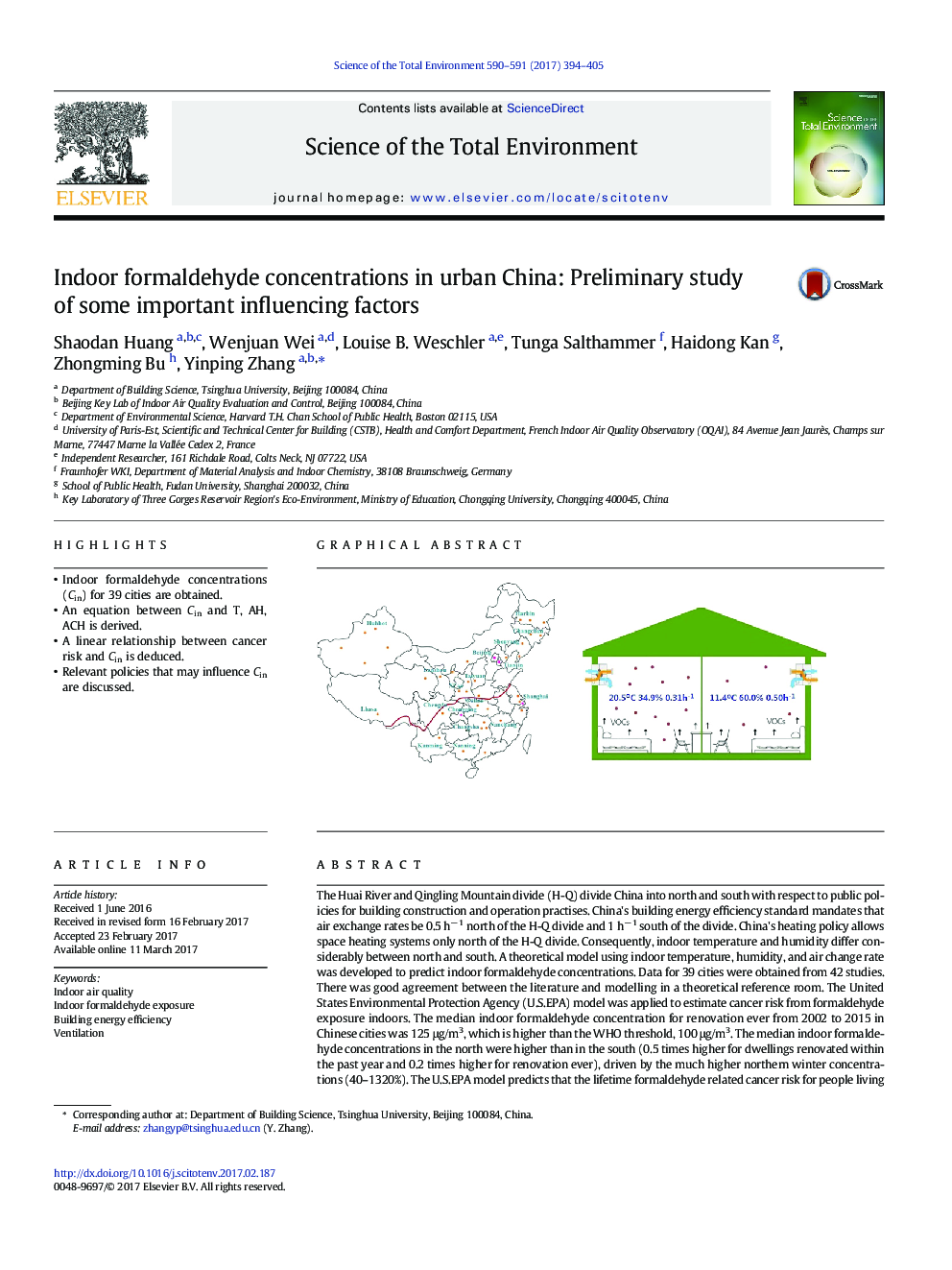| کد مقاله | کد نشریه | سال انتشار | مقاله انگلیسی | نسخه تمام متن |
|---|---|---|---|---|
| 5751055 | 1619704 | 2017 | 12 صفحه PDF | دانلود رایگان |
- Indoor formaldehyde concentrations (Cin) for 39 cities are obtained.
- An equation between Cin and T, AH, ACH is derived.
- A linear relationship between cancer risk and Cin is deduced.
- Relevant policies that may influence Cin are discussed.
The Huai River and Qingling Mountain divide (H-Q) divide China into north and south with respect to public policies for building construction and operation practises. China's building energy efficiency standard mandates that air exchange rates be 0.5 hâ 1 north of the H-Q divide and 1 hâ 1 south of the divide. China's heating policy allows space heating systems only north of the H-Q divide. Consequently, indoor temperature and humidity differ considerably between north and south. A theoretical model using indoor temperature, humidity, and air change rate was developed to predict indoor formaldehyde concentrations. Data for 39 cities were obtained from 42 studies. There was good agreement between the literature and modelling in a theoretical reference room. The United States Environmental Protection Agency (U.S.EPA) model was applied to estimate cancer risk from formaldehyde exposure indoors. The median indoor formaldehyde concentration for renovation ever from 2002 to 2015 in Chinese cities was 125 μg/m3, which is higher than the WHO threshold, 100 μg/m3. The median indoor formaldehyde concentrations in the north were higher than in the south (0.5 times higher for dwellings renovated within the past year and 0.2 times higher for renovation ever), driven by the much higher northern winter concentrations (40-1320%). The U.S.EPA model predicts that the lifetime formaldehyde related cancer risk for people living north of the H-Q divide is 1.2 times greater than for people living south. This can be partly explained by greater indoor exposure to formaldehyde for Chinese living north of the H-Q divide.
101
Journal: Science of The Total Environment - Volumes 590â591, 15 July 2017, Pages 394-405
